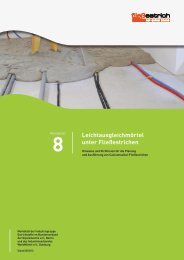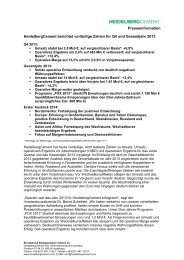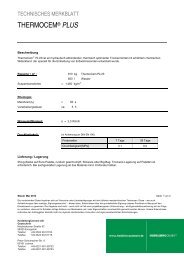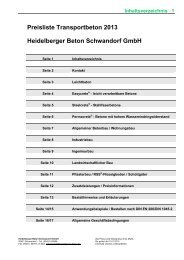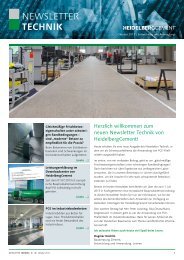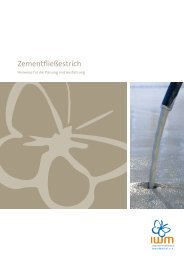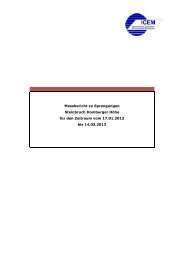TPCC Annual Report 2008.indd - HeidelbergCement
TPCC Annual Report 2008.indd - HeidelbergCement
TPCC Annual Report 2008.indd - HeidelbergCement
You also want an ePaper? Increase the reach of your titles
YUMPU automatically turns print PDFs into web optimized ePapers that Google loves.
Tanzania Portland Cement Company Ltd, <strong>Annual</strong> <strong>Report</strong> 2008<br />
The basic and diluted earnings per share are the same as there are no convertible instruments.<br />
58<br />
2008 2007<br />
Profit attributable to ordinary equity holders (TZS’ 1000) 34,962,320 30,111,586<br />
Numbers of shares 179,923,100 179,923,100<br />
Basic earning per share (TZS) 194.32 167.36<br />
Diluted earning per share (TZS) 194.32 167.36<br />
38. Financial risk management objectives and policies<br />
The Company’s principal financial instruments comprise treasury loans and trade payables. The main purpose of these<br />
financial instruments is to raise finance for the Company’s operations. The Company has various financial assets such as<br />
trade receivables and cash and short-term deposits, which arise directly from its operations.<br />
The main risks arising from the Company’s financial instruments are cash flow interest rate risk, liquidity risk, foreign cur-<br />
rency risk and credit risk. The board reviews and agrees policies for managing each of these risks which are summarised<br />
below.<br />
Treasury risk management: The Company operates a treasury function to provide competitive funding costs, invest and<br />
monitor financial risk. The Company does not use derivative financial instruments for speculative purposes.<br />
Liquidity risk: The Company does not face any liquidity risk as it has sufficient funds to cover its working capital needs<br />
for the foreseeable future.<br />
Foreign currency risk: Foreign currency risk is managed at an operational level and monitored by the Finance Division.<br />
Exposure to losses from foreign liabilities is managed through prompt payment of outstanding liabilities and forward<br />
purchase of foreign currencies.<br />
The following table demonstrates the sensitivity to possible changes in the exchange rate between the Tanzanian Shilling<br />
and foreign currencies (mainly US dollar), with all other variables held constant, of the Company’s profit before tax (due<br />
to changes in the fair value of monetary assets and liabilities).<br />
Net effect based on balance sheet as<br />
at 31 December 2008<br />
Increase/decrease in the value of<br />
TZS vs. other currencies<br />
Effect on profit before tax TZS’000<br />
+10% +3,800,000<br />
-10% -3,800,000<br />
Interest rate risk: The Company has adopted a non- speculative approach to the management of interest rate risk.<br />
Credit risk management: Potential concentration of credit risk consists principally of short term cash and trade debtors.<br />
The Company deposits short term cash surpluses only with banks of high credit standing. Trade debtors are presented





